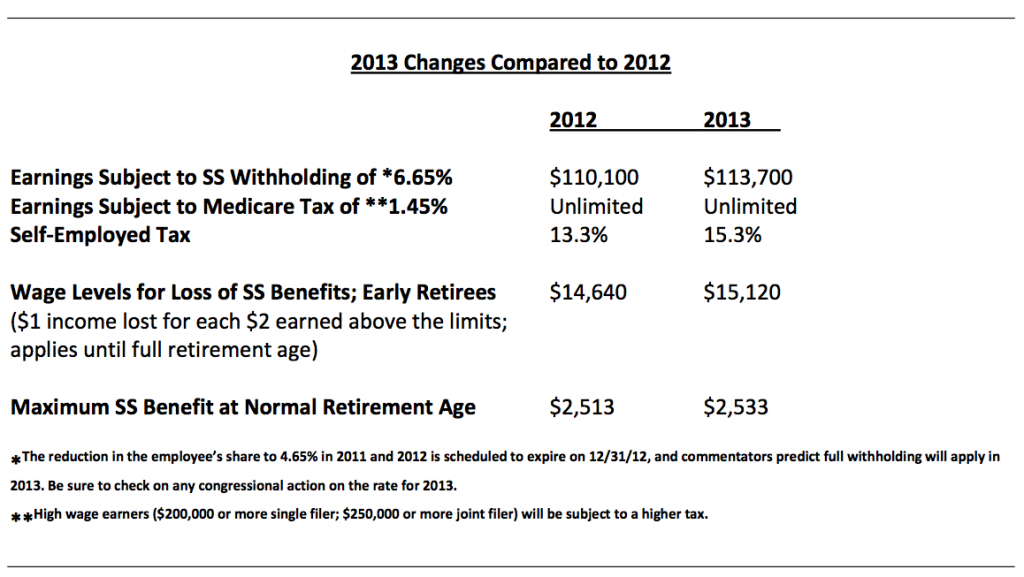Editor’s Note: This article was published in the most recent issue of "Market Beat," published by the National Tax Sheltered Accounts Association (NTSAA), the nation's only independent, non-profit association dedicated to the 403(b) and 457 markets. Used with permission.
By Ellie Lowder, TGPC, Consultant
Advisors who work closely with their clients on sources of retirement income know that it’s important to include calculations and counsel on Social Security benefits. This article addresses the 2013 changes in those benefits and addresses some of the more frequently asked questions.
Frequently Asked Questions
Q: My client is receiving Social Security benefits at age 62, and is also working part time. His earnings for 2012 will be $17,000; however, he has asked if he can reduce that salary to avoid loss of Social Security benefits by contributing $2,500 to his 403(b) plan. Can he do that?
A: Unfortunately, no! Pre-tax contributions to a retirement plan or an IRA do not reduce wages for purposes of the earnings test. Wages will be calculated based on gross salary prior to the pre-tax contribution. Note that wages and net earnings for the self-employed, to the extent they exceed the annual limits (see table below), will reduce the Social Security benefit by $1 for each $2 earned above the listed wage levels.
Q: I am helping my client plan for retirement and need to get information on the taxation of Social Security benefits. The client wants to limit the withdrawals from his 403(b) and 457(b) accounts to an amount that would eliminate taxes on his Social Security benefit. What are the numbers?
A: If the total of one-half of the Social Security benefit plus other income (defined below) received by your client exceeds certain base amounts, then a portion of the Social Security benefit would be taxable. Specifically:
• If the total is between $25,000 and $34,000 for a single filer or between $32,000 and $44,000 for joint filers, then 50% of the Social Security benefit is taxable.
• If the total is $34,000 or more for a single filer or $44,000 or more for joint filers, then 85% of the Social Security benefit is taxable.
For this purpose, income is defined as the taxable income of a single tax filer, or both incomes of joint tax filers, plus tax-exempt interest, interest on U.S. savings bonds and excludable income earned in a foreign country, Puerto Rico or U.S. possession.

